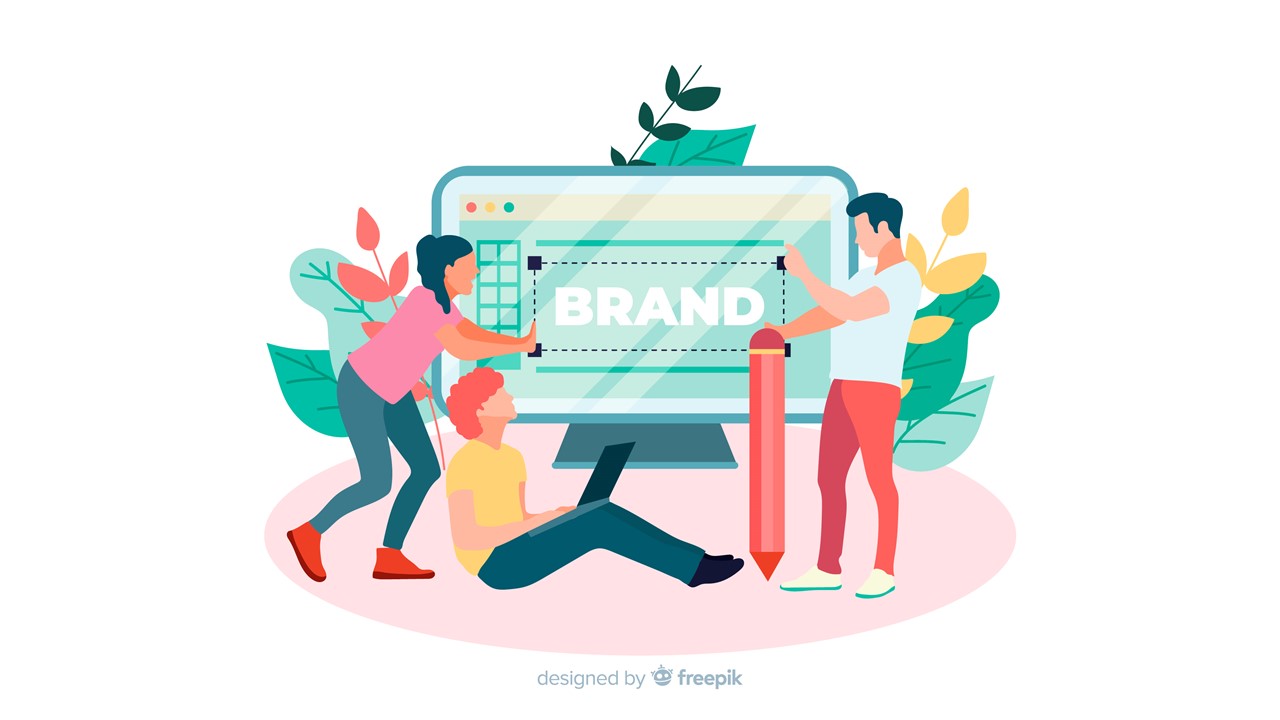Brand elements are important aspects of Marketing communication. Here brand elements are explained with simple examples in the Indian context. It is also useful to learn these examples in local context for Indian students as they can relate well to brands they know well. For readers from other countries, these examples of brand elements would provide information about branding in Indian context.
What is a Brand?
A brand is a “name, term, sign, symbol, or design, or a combination of them, intended to identify the goods and services of one seller and to differentiate them from those of competition.”
-American Marketing Association (AMA)
Brand Elements
So we introduce the term “Brand elements” which refer to components like name, logo, symbol, package design, or other characteristics that help in identifying and differentiating a product. In a way, brand element deals only with those things that are mentioned in the AMA definition of brand. From here, we would look into each of the brand element components individually by taking examples of various brands.
Components of Brand Elements
1. Name (brand name , URLs):
Brand name
Brand name is the The word or words used to identify a company, product, service, or concept.
- Acronym: A name made up of initials. Some examples are IBM, UPS.
- Descriptive: A name or tag that describes the benefit or function of a product. Example: Ujala.
- Alliteration and Rhyme: Names that are fun to say and retain in mind such as Liggad Papad
- Evocative: A name that suggests a related, brilliant image, for instance; Tiger biscuit brand of Britannia
- Neologisms: A new word framed/ made up altogether like Airtel, Kodak and Xerox which is then forged into identity by promotion.
- Foreign word: Adopt a term from another language such as Samsung and Volvo
- Person-based name: These names use the names of real people (like founder, partners or prominent individuals) such as ADAG group, Mahindra, Walt Disney and Hewlett Packard
- Geography: Various brands are named after landmarks and regions like Indian airlines, South-west airlines, Asian paints, Fuji Film and Cisco
- Personification: Several brands derive brand names from legends like Nike and Betty Crocker. A lot of local players in the Indian market make use of God’s name as their brand such as “Lakshmi jewellers”.
Other kinds of name classifications are Utility based brand; Celebrity/ personality based brand; Brand Name extension – splendor, splendor+; Brand Name with numeric extensions; International Brand and its implications. A known brand name can act as a symbol of reliability and trust over an unknown brand. It can also play a key role at the time of brand extension. Therefore, brand name is one of the brand elements examples.
Universal Resource Locaters (URLs):
The unique “Universal Resource Locater” used to identify a company, product or service in the web space. The URL http://www.espncricinfo.com/ would be another brand elements examples where it suggests about its service i.e. a source or repository of information regarding cricket and also about its provider ESPN which provides authenticity to its service.
2. Term (labelling, slogans):
- Slogans: A short and striking or memorable phrase used to relate to a company, product, service, or concept. Some instantly remembered brands and their slogans are:
| Slogan | Brand |
| The taste of India | Amul |
| Daag Acche hain | Surf |
| Lifebuoy hai jahan, tandrusti hai wahan | Lifebuoy |
| Desh ki Dhadkan | Hero Honda |
| Desh ka namak | Tata salt |
| Har Khar Kuchch Kahta hein | Asian Paints |
A company can have more than one slogan, but generally, it changes with time when the attribute or quality stressed changes.
- Labelling: The mandatory objective of labelling is to guarantee that consumers have access to complete information on the content and composition of products. The marketing aspect of labelling is to emphasize the key value proposition being provided to the consumer.
The most common characters to define a label are:
- Any textual matter attached to or packed with the part of food stuff.
- Any pictorial matter attached to or packed with the part of food stuff
This clearly shows that labelling includes only the text and picture, and not the physical container itself.
Characteristics of Labeling:
- Identifying the product
- Informing the consumers about the product
- Presentation of the product
- Individualizing the product
The three primary functions of labelling are:
- The Informative function: “for consumers to make rational and well-informed choices, information is a fundamental requirement.”
-Brown
- Descriptive Information: Name of a product or the words describing it.
E.g., Glucose biscuit for Parle-G serves as brand element that provides information to the consumers about what the product is.
b.) Usage information: “Shake well before use” or “to be consumed under a physician’s recommendation” in case of medicines
c.) Service information
Shadi.com would be one example where the name suggests the service that is provided. Such brand elements examples are rare because it is difficult to get the domain name or trademark for common names.
d.) Other information: “World’s Largest Selling Biscuit” For Parle-G just explains what other information can be shared in a label.
2.) Marketing Function: Visual and Verbal characteristics
Labelling as an attractive method to convey the virtues of the product
- Warning function: A typical example is “Not for children below the age of 3 years” written on a medicinal product.
3. Sign (signage, logo)
A sign is an object, quality, or event which signifies the brand’s presence.
- Signage: Any kind of visual graphics created to display information about a company, product, service or concept. In order to be effective, signage must work quickly to relay an original message. Whether it be instant brand recognition or a tactical message. Here as well, colour plays a crucial role, and the font type must be synchronized with the overall design such that it is comprehensible.
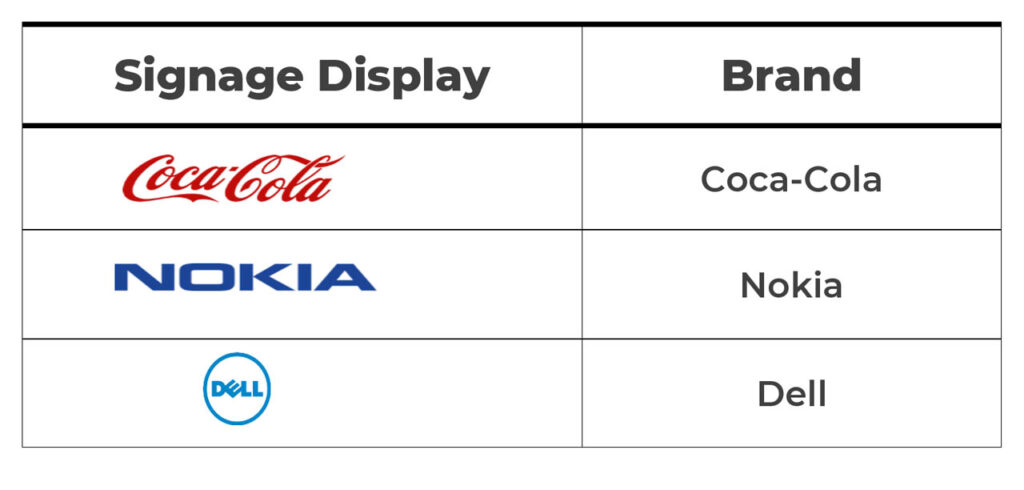
Logo: A symbol or other small design adopted to identify the company or its product. The practical design and use of a logo employ the understanding of human behaviour. Whether cultural or internal, people recognize and react to color, shapes, lines, fonts and other symbolic forms with emotions tied to their experiences.

A logo tries to capture a person’s mind by means of photographic memory, but the challenge is how a brand is going to be spotted out of hundreds of logo which a consumer might come across daily.
4. Symbol (characters, spokespeople):
- Characters: The mental and moral qualities distinctive to something which is used to endorse the brand. The character might be animated or fictional as in many cases.
E.g. Lion and Liona character for Kwality Walls Paddle Pop range.
- Spokespeople: A person (either gender) who speaks or represents the company, product or service.
| Spokespeople | Perceived Quality | Target customer |
| Amir Khan (Actor) | Intellectual, Thinker, Exotic | Titan: youth and professionals |
| MS Dhoni (Cricketer) | Strong, macho look, strongly masculine, street-smart, athletic | Aircel: Targeting younger generation Nike: sport wears |
| Priyanka Chopra (Actress) | Fun loving, adventurous, smart, challenging | Hero-Honda Pleasure: Teen girls and college girls |
The person endorsing the brand must possess characters which align with the product or the brand being endorsed. It gives the consumer with a sense of direct acceptance if the perceived nature and the brands value proposition match.
5. Design (packaging, colour, shape, ):
- Packaging: The way a product is packaged and finally presented in front of an end customer. In modern days, Packaging not only deals with the product protection but also as a source of conveying the product attributes indirectly
Some objectives which packaging must achieve both from a firm and consumer perspective are:
- Identify the brand
- Convey descriptive and persuasive information
- Facilitate product transportation and protection
- Assist at-home storage
- Aid product consumption
Further, the above objectives can be grouped into three core functions namely:
- Product protection (Primary, Secondary and Tertiary packaging)
- Marketing function
- Convenience function
The aesthetic components like package’s size and shape, material, colour, text and graphics and the functional component must be the latest innovations in the market and must try to meet marketing objective and customer need. It helps in meeting our marketing mix modeling. Similarly, structural design as well must the latest (take the case of metal box company, where it resulted in shunning that kind of packaging due to technological shift or advancement) as it helps in delivering the product at the expected level and also results in an increase in profit margin.
- Colour: Color plays a significant role in the product design. The consumers have specific affinity to certain colors and have mapped to some attribute which the designers refer to “color vocabulary”. But the perceived attributes are not the same everywhere and varies based on cultural and geographical differences.
| Colour | Brands | Perceived attribute |
| Red | Coca-Cola, Colgate | Red makes food appealing and influences consumers to eat more. The red colour also conveys power |
| Orange | Tide detergent | Orange induces a more regal look to the product |
| Blue | IBM, Pepsi-cola | viewed as clear, calm, reliable and strong |
| Green | Lipton Tea | natural and perceived as expensive compared to other colours |
Even specific brands are so strong that they develop “colour ownership” that any cola drink in red colour will be perceived as Coca-Cola. One typical example is that the dairy product (esp. milk) predominantly more appealing in a white carton, which is a result of consumer perception. Similarly, an interesting phenomenon is that of the survival instinct of the human nature which tends to view the surprising stimuli with greater attention than the standard stimuli. Thus advertisements with this an unusual nature of nature message, creativity etc. are typically more noticed. For example, a typical sound given in Bingo attracts the attention of the viewers and makes them look for the brand.
- Shape: The shape of the product not only helps to gain from its logistics side but also from the perception side. It also helps to prevent losses while transporting and at times define the product. Any alcoholic drink stored in a transparent white glass is perceived to be Vodka. Similarly, the size must also be considered and made available as per consumers need. Example: Parle-G comes in Rs. 1,2,3,4, 5, 10, 20 &50 packs as per user need.
6. Other (Jingles, movement, taste etc.):
Jingles: A unique music or a tone which is related to a company, product or service. The tone should be in tune with the product like an energetic tune for youth based products, a soft and emotionally feel free for women based product and subtle and gentle music for professionals.
This instantly reminds me about Vicco turmeric’s “ayurvedic cream” jingle and the ultimate Lijjat Papad’s jingle” Kharram Khurram. In some products, one also remembers the brand name is repeated many a time along with the jingle like Lifebuoy. The other example is of Coke which had two jingles in a row, “Thanda Matlab Coca-Cola” and “Piyo sar utha ke”.
Any trademark able unique property/invention like product taste, scent or its movement in unique fashion is part of the brand element in specific cases.
Scent: The rose-jasmine-musk scent of Chanel No. 5 is trademarked (no Indian brand example known).
Taste: Kentucky Fried Chicken has trademarked its special recipe of eleven herbs and spices for fried chicken (no Indian brand example known).
Movements: Lamborghini has trademarked the upward motion of its car doors.
Apart from the roles played by the different brand elements discussed so far, one could quickly sense that any of these elements can be designed to express anything the brand desires to be perceived as but the challenge is how useful it can be done and what proportion of these must be used.
The significance of brand elements:
In order to build brand equity, one has to choose the branding elements carefully. Now in order to explain this, we look at brand elements in the context for which it is used:
Verbal Context:
The brand elements like URL’s, symbols, characters, spokespeople, packages and signage which says all about the product. These are the ones that transform a commodity into a product.
Visual Identity:
The visual identity reflects the core brand identity code and should be managed by strict visual code guidelines for long-term consistency without confusing brand identity deviation. The mixture and balance between the different elements in their verbal and visual context to maximize their collective contribution to the brand equity. This signifies the importance of brand elements.
Criteria to measure the brand elements impact:
The brand elements help in not only enhancing brand awareness but also in facilitating the formation of stable, favourable, and unique brand associations. In general, there are six criteria for measuring the impact of brand elements:
- Memorability. Brand elements should be inherently memorable, easy to recognize and easy to recall. Brands like “Wheel” & “Ghadi (clock)” are good examples.
- Meaningfulness. They should be inherently meaningful to convey information about the nature of the product category, the particular attributes and benefits of a brand, or both. Example: Parle-G (Glucose Biscuit) which inherently conveys the meaning, “Annapurna” brand is also significant, FedEx is another brand which explicitly conveys Federal Exchange. “Nimbooz” is an interesting example which inspired its name from “nimbu pani” which is equally memorable.
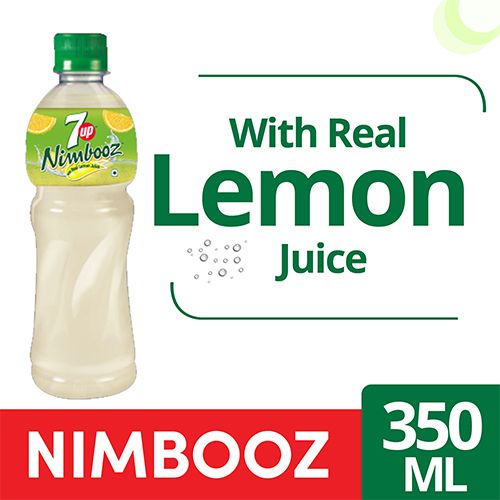
- Likability. The information conveyed by brand elements does not necessarily have to relate to the product alone and may merely be inherently appealing or likeable. Example: Surf excel where the word “excel” is appealing.
- 4.) Transferability. Brand elements can be transferable within and across product categories to support line and brand extensions, and across geographic and cultural boundaries and market segments. A good example is the atta brand “Annapurna” which has the same meaning in all the Indian languages. The brand name is more meaningful but still transferable which is a rare blend to achieve.
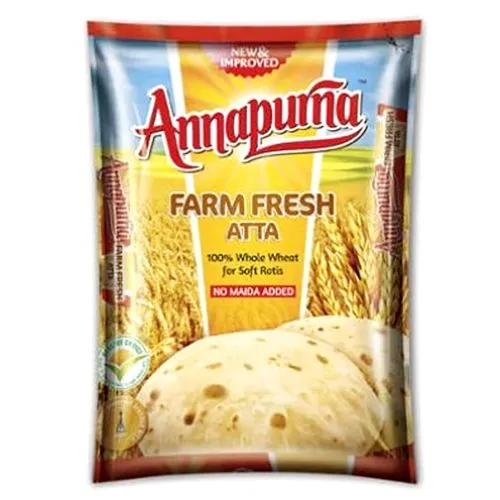
- Adaptability. Brand elements must be more adaptable and flexible as it can be updated when the consumer values and opinions change, or just because of the need to remain contemporary, most brand elements must be updated. Example: Logos and characters can be given a new looking or a new design as you can see in the case of Godrej, CEAT, Shoppers Stop etc.
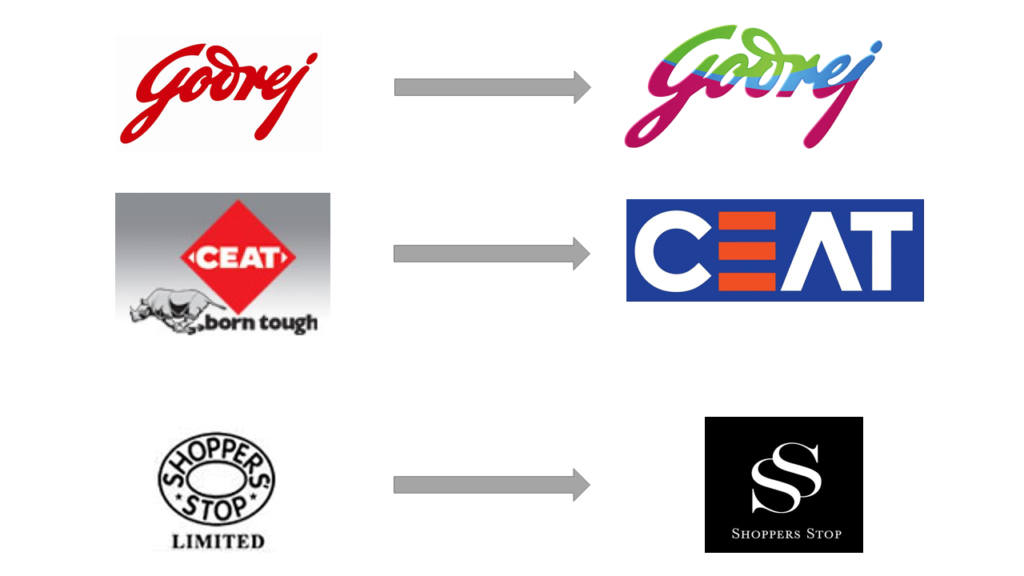
6.) Protectability. They should be legally protectable and, as much as possible, competitively defensible. Example: Bajaj Pulsar, Reliance and many other Indian brands.
The first three criteria are the marketer’s offensive strategy and build brand equity. The later three, however, play a defensive role in leveraging and maintaining brand equity with respect to different opportunities and constraints.
References:
- Strategic Brand Management by Kevin Lane Keller, M.G. Parameswaran and Isaac Jacob
- http://en.wikipedia.org/wiki
- http://adcampaigndesign.wordpress.com/2011/02/01/choosing-brand-elements/
- https://ujdigispace.uj.ac.za/handle/10210/4325 An article by Hasert, Rudolf Karl
- http://www.brands.net.au/types-brand-names/
- http://churmura.com/business/packaging-and-labeling-in-marketing/22740/
- Guidance material provided by Prof. Ramanuj Majumdar
